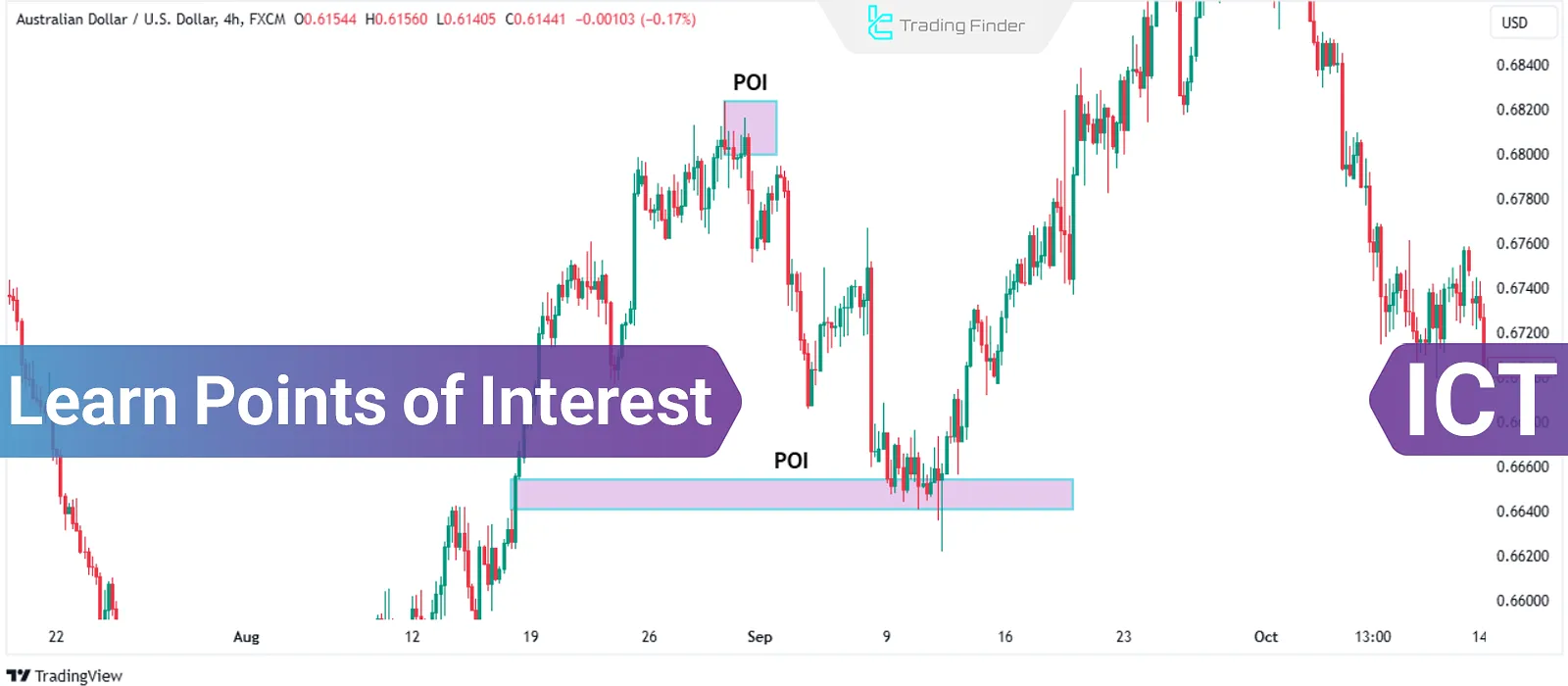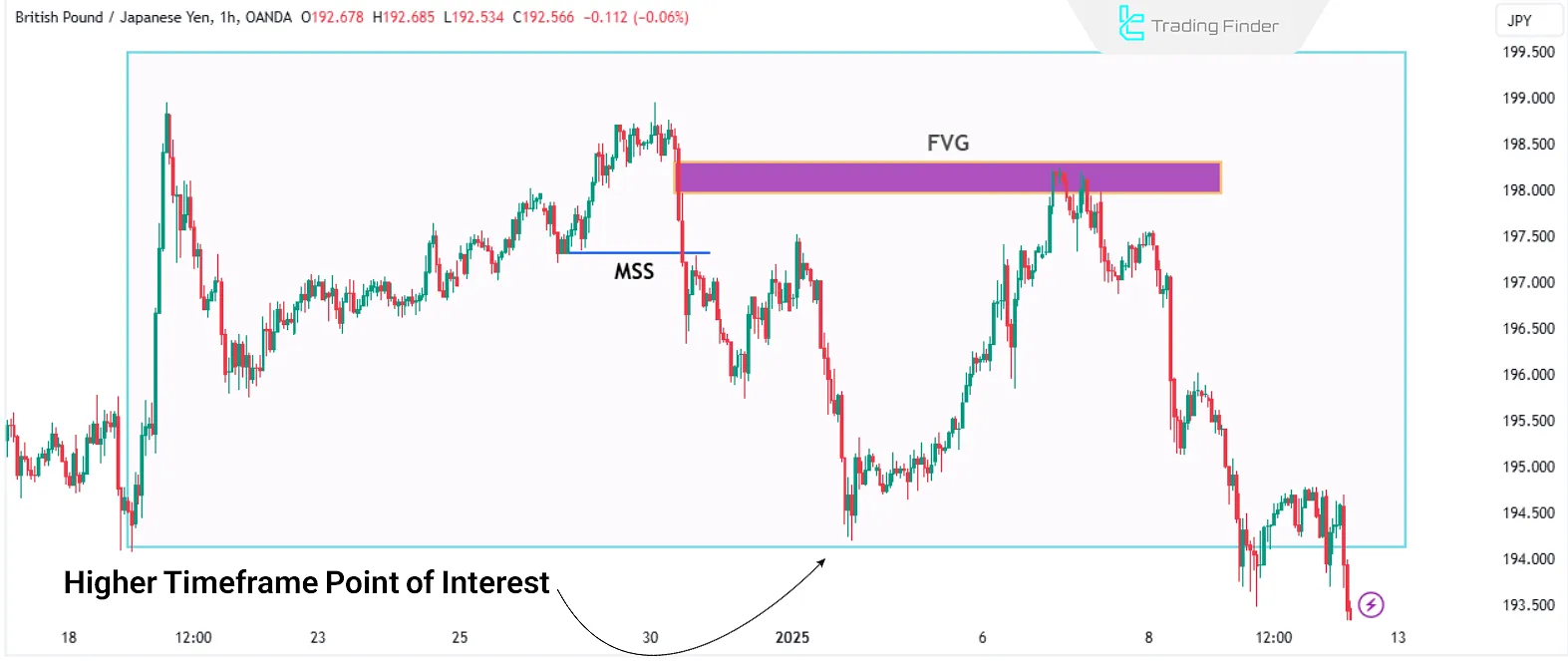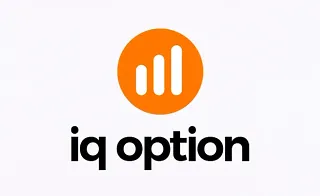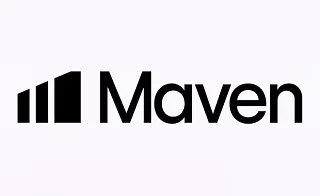In financial market analysis using the ICT style, Points of Interest (POI) in higher timeframes are used to analyze the ongoing trend, while in lower timeframes they are applied for strategies related to trade entries.
In general, price tends to move towards significant points of interest (POI); therefore, by identifying these points, it becomes possible to determine the Market Structure and the probable trend direction.

What is a Point of Interest (POI) in ICT Style?
In ICT style, a Point of Interest (POI) refers to areas on the chart where the price is likely to react. These points can be support and resistance levels, order blocks, Fair Value Gaps (FVG), or any other area associated with smart money activity.
How to Identify Points of Interest (POI) in Higher Timeframes?
To use POI in analysis, the key points in higher timeframes must first be identified. The five main elements to focus on are:
Highs and Lows
These points often act as price magnets and it must be determined which highs and lows have been broken and which ones are the next probable targets for price. For example, closely located lows that the price moves towards and then reverses from can indicate potential entry areas.
Fair Value Gaps (FVG)
Fair Value Gaps occur as a result of rapid price movements and are often zones for retracement or trend continuation. These gaps are usually visible in higher timeframes and are used as key points for reversal or continuation of price movement.

Order Blocks (OB)
Order Blocks are areas where banks or large financial institutions have entered the market. These areas are usually accompanied by price reversals and can be entry or exit points. Traders often seek price reactions within these blocks for confirmation to enter trades.
Optimal Trade Entry (OTE)
The OTE setup refers to entering a trade in a Fibonacci retracement zone (between 61.8% and 79%) that, relative to the previous move, lies within the Discount Zone or Premium Zone. To use OTE effectively, a specific move (bullish or bearish) should first be identified, and then the Fibonacci tool should be applied to find the optimal zone.
Internal Range Liquidity
This type of liquidity is usually found within a price range and can serve as a point for trend reversal or continuation. For example, during price oscillations between two key levels, traders can identify internal liquidity points to find trading opportunities.
External Range Liquidity
This type of liquidity is usually found outside the current price range and is used as key points for breakouts or major trend reversals.
For example, if price approaches key levels outside the current range (such as previous highs or lows), traders can identify these points as targets or entry and exit points.
External range liquidity, especially when the market exits a consolidation phase, offers significant trading opportunities.

How to Use POI for Entries in Lower Timeframes?
After identifying POIs in the higher timeframe, they are then used to find entry points in lower timeframes. The process includes the following steps:
#1 Evaluating Breaks of Highs or Lows
Once price reaches a POI, it should be assessed for breaks of highs or lows. Breaking these levels indicates the strength or weakness of the trend and serves as an initial signal for trade entry. If a high or low is broken and price quickly reverses, it may signal a trend change.
#2 Searching for Fair Value Gaps
In lower timeframes, smaller FVGs can be found. These gaps serve as entry zones because price usually tends to fill them. Traders can identify these zones using technical tools such as Fibonacci or trendlines.
#3 Identifying Local Order Blocks
Order Blocks in lower timeframes provide more precise entry points. For example, if price reaches an order block and reacts, a reversal or continuation can be expected. Professional traders often look for additional confirmations in these areas.
#4 Observing Market Structure Shifts
A shift in market structure in lower timeframes is sometimes a sign of a trend change in the direction of the POI. For example, if price quickly returns after breaking a high, it may indicate a reversal. These changes are often accompanied by high volume and strong candles.
#5 Using the OTE Tool
After identifying a significant move in a lower timeframe, traders can use the OTE setup with the Fibonacci tool to find suitable points for trade orders, such as entry orders, take profit, and stop loss. This also allows identifying multiple staged entry points for a trade.

Conclusion
In ICT style analysis, identifying and using Points of Interest (POI) in higher timeframes as key price reaction zones, combined with lower timeframe analysis to find precise entries, is the main approach.
Other concepts in this style, such as market structure, price gaps, order blocks, and internal and external range liquidity, are tools used to forecast future movements and identify potential areas for reversals or trend continuations.





